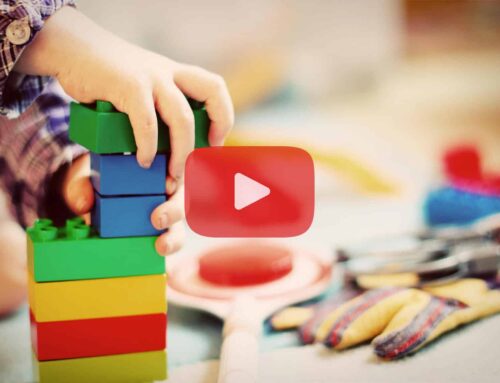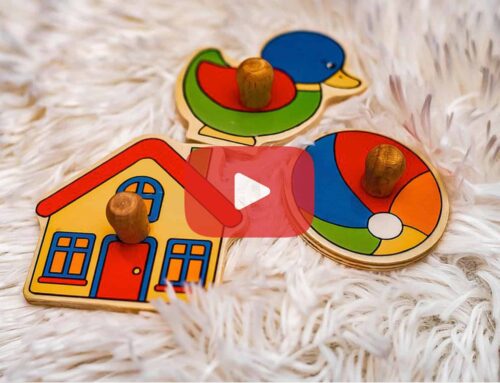Creating a Picture Schedule
One of the reasons that young children seem so comfortable at preschool is because they know exactly what is happening when. Their classroom routines become automatic, especially when they can see them. Clear expectations about the flow of the day are established at the start of the year. The children come to rely on these expectations and find comfort in the familiar rhythm of their days. In this way transitions can be anticipated, and children can look forward to their favorite times of day.
To create a picture schedule at home, start by examining your daily routine. Give it some careful thought and come up with a daily structure that works for your family during this time. Your daily plan may include: free play, dedicated clean up times, quiet rest, meals/snacks, limited screen time, indoor/outdoor movement, and supervised activities such as cooking, art and water play.
It is important to remember that you are creating an ordered routine, not a precise schedule with exact times. Over a relatively short time, your children will begin to internalize the general outline of the day’s flow. Their new rhythm will become familiar with practice, and you can stop improvising.
Here is a possible routine:
- Breakfast
- Outside or Music/Movement Activity
- Independent Choice Time/Free Play
- Clean Up
- Snack
- Project
- Lunch
- Quiet Time
- Outdoors
- Independent Choice Time/Free Play
- Screen time
- Dinner
- Books
- Bedtime
To plan this schedule, I kept a few things in mind:
- The day starts together after breakfast. This will give children some reassuring attention right at the start of the day.
- Active movement early in the day will help children to release some energy.
- Free Choice, Quiet Time, and Screen Time are meant to be independent. Everyone has time to themselves, including parents. Try streamlining as much as possible, coordinating your own work/break with your children’s independent times.
- Alternate active/quiet times of day, and independent/supervised play.
- Rituals, lighting and music, will help with transitions.
- Go outside everyday, rain or shine. Explore and experience nature, breathe fresh air and move in an unconfined space. It’s healthy and necessary.
Making A Schedule Board for Your Home
Once you have decided on a daily rhythm that works for your child, create an eye-level visual schedule to refer to each day.
-
-
- Write out a list of every part of the day (of course this will vary for each family). This might include the following activities: Art, Cooking, Exploration, Water Play, Choice Time (2), Outdoors (2), Rest Time, Screen Time, Story Time, Movement, Music, Clean Up (2), Snack, Lunch, Dinner. Add an additional “Something Different” picture to give yourself the option for a surprise. Write or print list in approximately 24 bold pt. type. Cut out each activity name. For example:
- Art
- Cooking
- Choice Time
- Choice Time
- Something Different
- Create pictures to represent each part of the day. Take a quick photo of your child doing the described activity, or use clip art or your own drawings. Invite your children to participate. They can draw or choose photos to represent their daily activities. Cut out images. Glue activity names and images on 4 x 6 index cards (or 5 x 7 for two year olds), or computer paper cut into quarters or halves.
- Place the finished schedule cards in order with magnets at your child’s eye level. The bottom part of your refrigerator is ideal. You can also use a white board with magnets, or a bulletin board with push pins. Velcro on poster board works, too. So do large Post-Its in a pinch. (For younger children, you may want to display one row at a time; ie. morning schedule through lunch, and the afternoon through bedtime. See what works for your children.)
- As you go through your day, turn over or remove each card as you finish the activity that it represents. In this way, children can actually see where they are in the day.
- Write out a list of every part of the day (of course this will vary for each family). This might include the following activities: Art, Cooking, Exploration, Water Play, Choice Time (2), Outdoors (2), Rest Time, Screen Time, Story Time, Movement, Music, Clean Up (2), Snack, Lunch, Dinner. Add an additional “Something Different” picture to give yourself the option for a surprise. Write or print list in approximately 24 bold pt. type. Cut out each activity name. For example:
-
Your child will soon be able to follow the order of the day in pictures. You will begin to see independent visits to check the plan, seek reminders, and find reassurance. Creating this rhythm at home requires intention and forethought, but it’s worth the effort. When your young school child knows what to expect, the day is more likely to unfold with a greater sense of order and calm.



